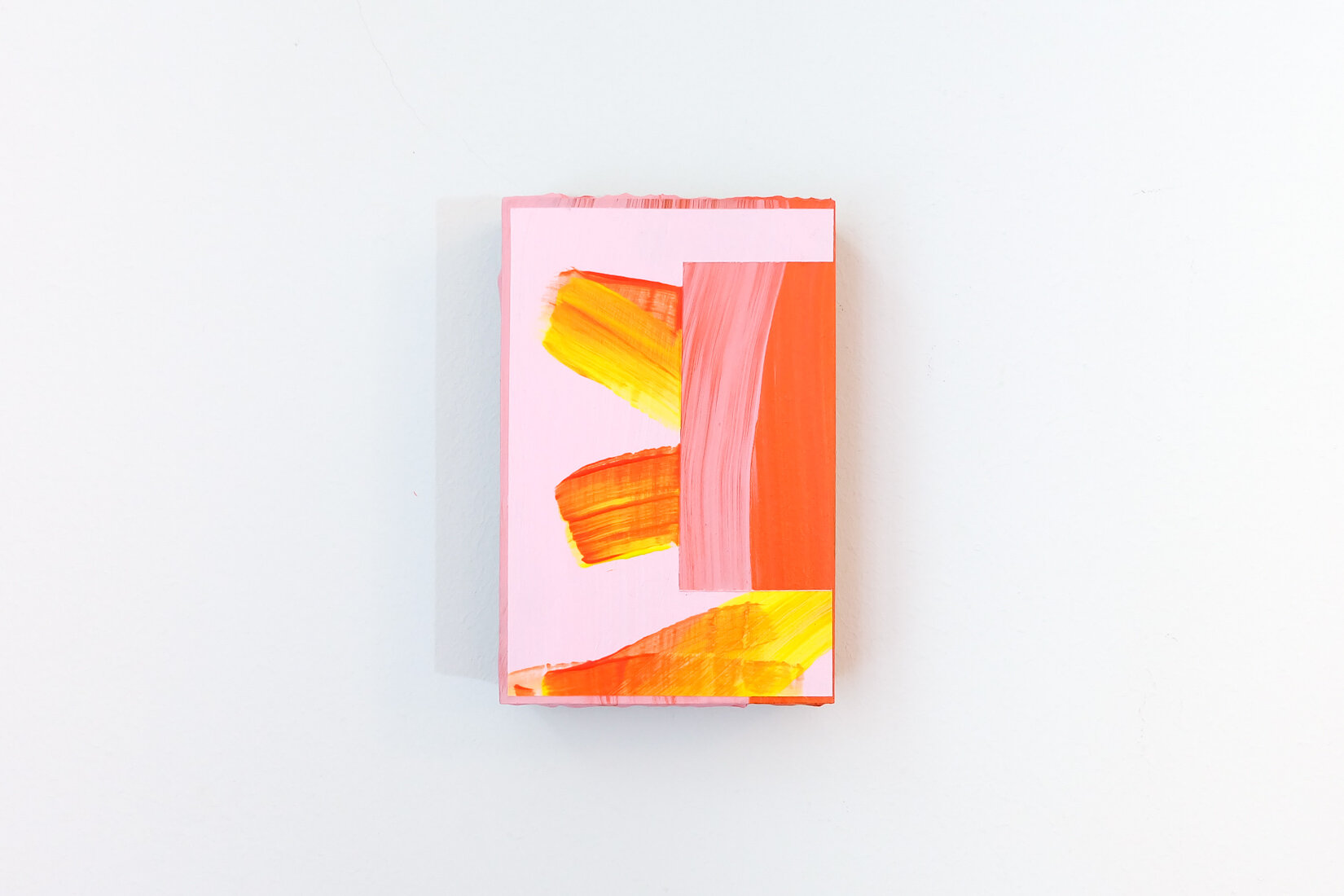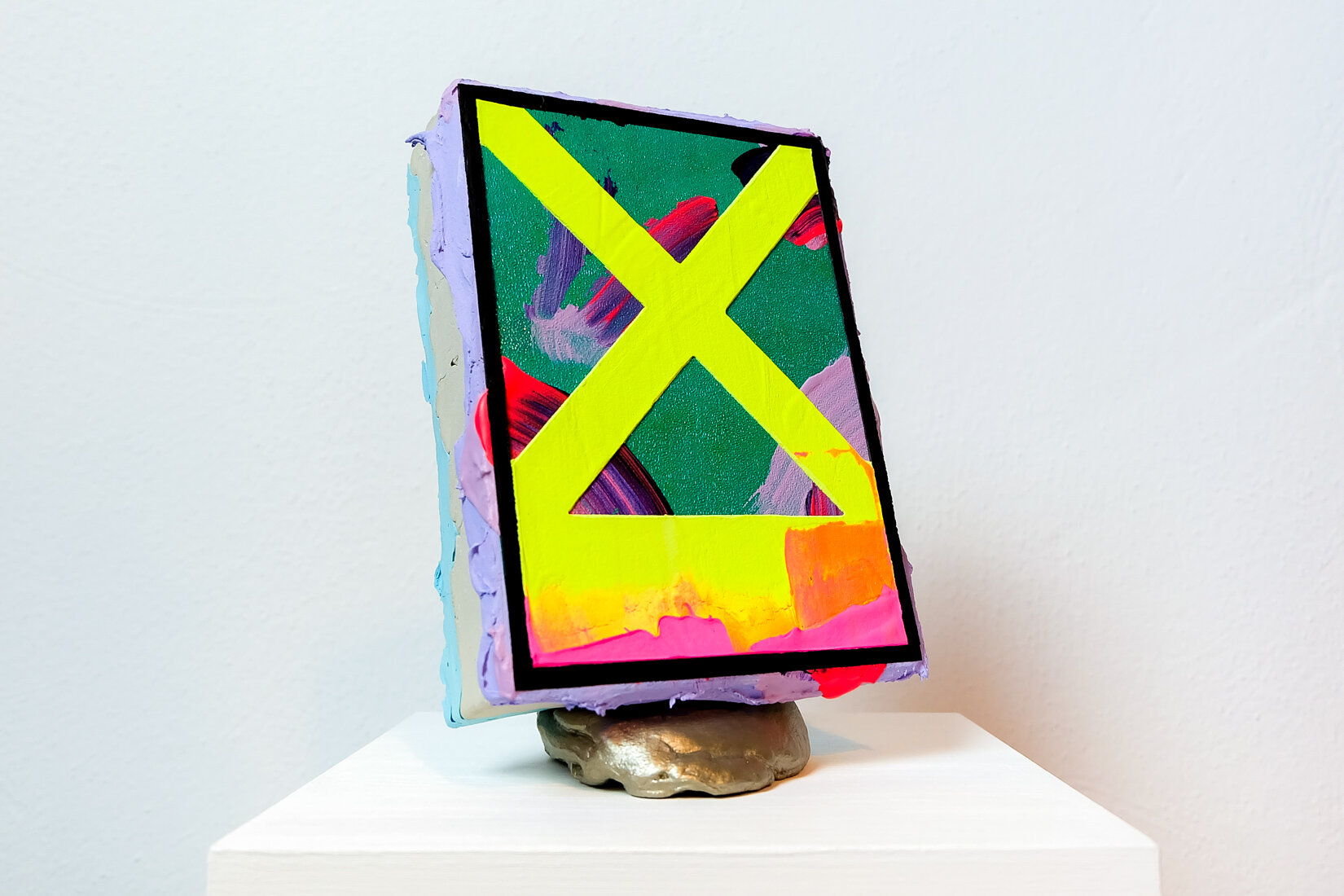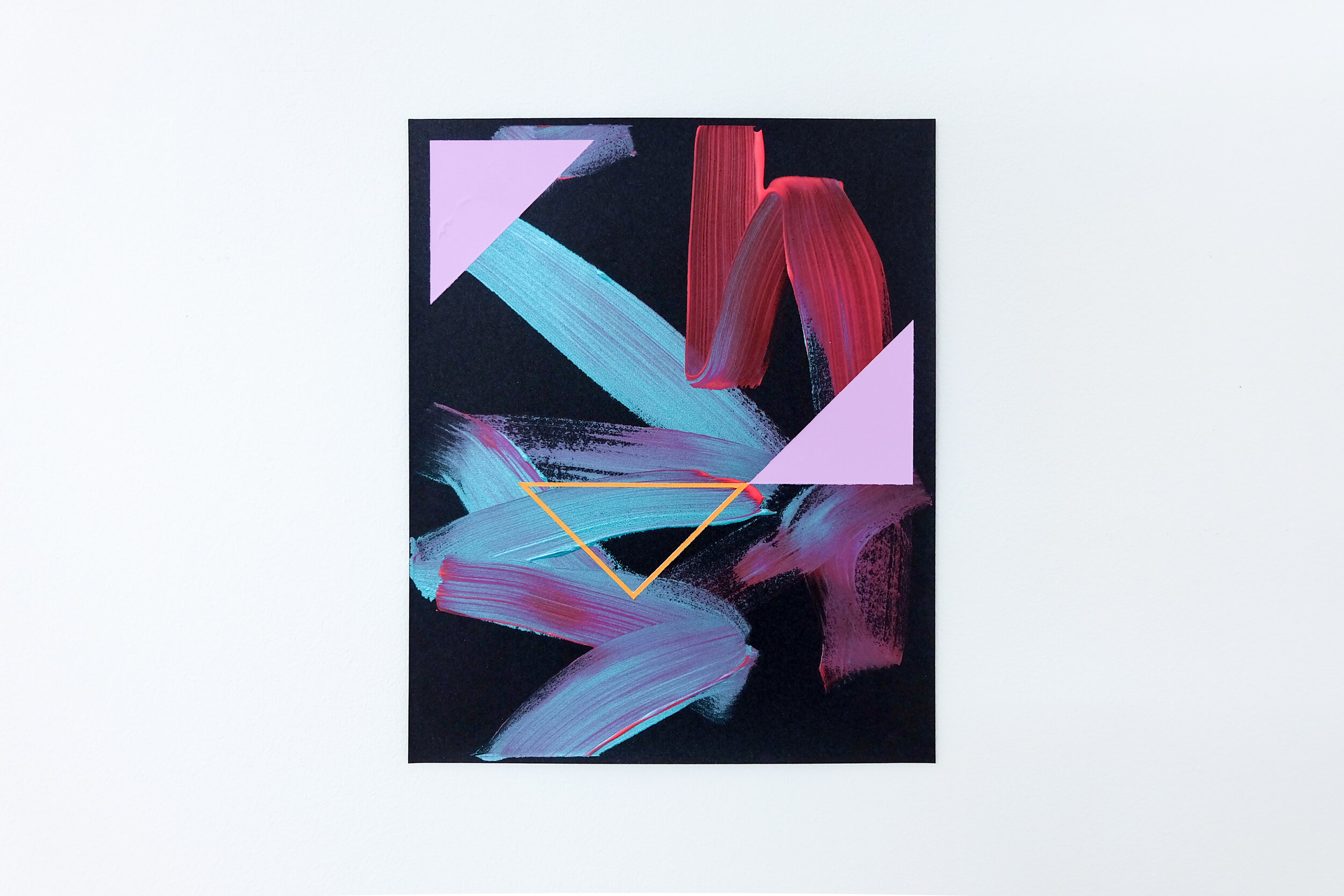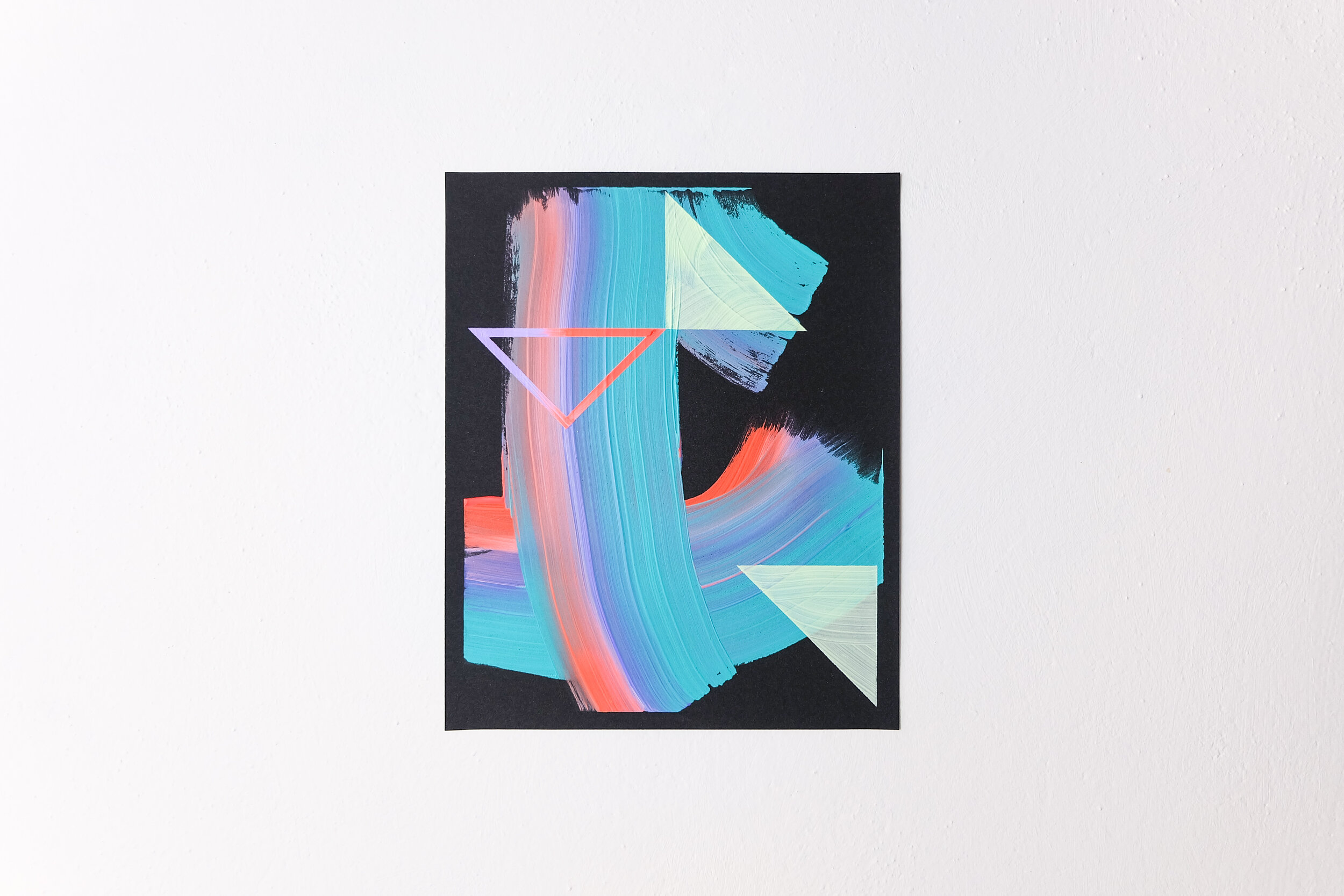Lisa Denyer: I Feel it Like a Hunger
Laura Harris
Cassette, 2017. Acrylic on panel. 15x10cm
In the first of a two-part series, Laura Harris meets artist Lisa Denyer, whose paintings will show alongside work by artist Laura Hopkinson at PAPER in Manchester in 2021.
***
20 March 2020 – I wrote the first draft of this article several weeks ago, as coronavirus was creeping more into the everyday here in my home in North West England. I was always aware that my words would meet my reader in a future that I couldn’t predict, and indeed the publication of this text is scheduled for a couple of weeks after I am making these revisions. I didn’t know what care would be needed when these words landed. Writing, especially art or essay writing, has something definitive about it. No matter how subjective the topic, the writing always stands as testament to how the author felt and saw the world at that moment; it’s usually fair to assume the future isn’t unduly far from the past. Living through this pandemic, I have no certainties; my feelings and view of the world constantly simmering, boiling over. This is an anxious essay. The linear path from draft to edit to publication has been shattered along a thousand uncertain timelines.
10 March 2020 – In the midst of this infected present, I have been getting to know the work of painter Lisa Denyer. In some of her pieces, thick pastel brushstrokes are made to graze over black paper, the weight and load of the brush performed with a delicate, whispering touch. The colours of different geometric shapes stuck over the brushstrokes give off an almost backlit luminosity, seemingly hovering over the picture plane. These paintings are on a restrained scale, A4 and familiar. In other works, small, thick wedges of clay, iced with sweetly coloured paints, nestle into supports that bulge like putty. The paintings are like odes to themselves, issuing from an intimacy between artist and materials. While one part of my mind has been taking part in the global malaise, another has been quietly filling up with the shapes, colours and gestures of her work.
My first encounter with Lisa’s practice was a digital one. Online, her works are flattened out and smoothed over. When we met in her Manchester home, she’d laid out a selection of her paintings and up close it became clear that the screen cuts off so much of what is crucial. For one thing, the black paper of some of her most striking pieces turns out to be sandpaper – Lisa likes to use household materials and textures, like sandpaper, emulsion, or Polyfilla. In the flesh, they exert a squelchy-ness and a snaggy-ness. They make you want to reach out and touch, to know how heavy they are, to feel the sand grate against skin. As the artist herself points out, the more 3D, sculptural paintings (that stand up on their own little platforms) are more like devices sitting compliantly on docking stations in the Apple store. This only adds to the desire to pick them up, to run hands over them, to own them.
Zombie, 2018. Acrylic, collage, filler and clay. Approx 21x13x11cm
This passage has aged quickly. Thinking now, in the edit, about reaching out to touch devices in an Apple store is charged with all the intensities of my current present. The other morning, I woke up to a message from my mother. It was a link to a BBC article about keeping my smartphone clean of all the contagions of which I now suspect my hands. I thumbed through the article, increasingly weary of the gestures of reading off a screen and of learning how to keep clean. As our devices become potential harbingers of disease (physical disease, rather than the mental unwellness they’ve always heralded), the lure of Lisa’s paintings is only more pronounced. I want to feel them in my hands, carefree.
When Lisa talks about her paintings, she talks of her touch. She talks of ‘responding to the materials’, of the ‘gestural mark’, and the need for the presence of the artist’s hand to emanate from the object. It is clear that this all emerges from an intimacy and respect between the artist and the paints and papers and liquids that she uses, or, as she says, ‘plays around’ with. This introduces a strange dimension for a viewer. The liveliness and allure of the paintings stems from the sense of an artist in love with her materials; as a viewer we pay witness to this, appreciating the delicacy, and perhaps envying the touch.
This is an edge Lisa treads in her work. In conversation, she often references digital aesthetics – a visual code which is counteracted by the deeply physical quality of her work. A similar edge is captured by paintings themselves, as the bold, graphic shapes and solid frames correspond with the sensitive and expressive strokes of paint. It is a crude analogy, but this tension reminds me of the practised, mindless ways that we swipe at a screen, where our fingers are strictly delineated by the rectangles of glass. It’s almost sweet, the way the brushstrokes radiate, and almost (but never quite) clichéd, the way that the stroking is recalled. Lisa’s work insists on the sweeping path that our touches leave across a surface.
Zag, 2017. Acrylic on sandpaper. 28x23cm
It is on this point that my mind – with its viral distraction – keeps snagging. Perhaps it is an affordance of paint, but getting to know Lisa’s work is, more than most artists I’ve written about, a kind of remembering on her behalf of the way she felt with her materials and textures. Through thinking about her work, I have been growing a hypersensitivity to the textures that I encounter with my hands. I’ve realised I rarely linger much on a texture, or follow its lead.
I’d like to think it’s prophetic, this focus on what we do with our hands. I think it’s more likely the birth of a paranoia that’s been growing in me longer than I care to admit. When I sent this draft to Lisa, it felt quite bizarre or self-serving to have written about her work in parallel with my experiences of touch and contagion. Now, I can only write from within this viral-perspective. I think we can all only write, think, care, love, and create from within this skittish and scary present.
A few days after talking with Lisa about her work, I was sitting in a bar with a friend. I’d been struggling to find a way to write this article, aware that Lisa’s paintings had stayed with me somewhere I couldn’t quite place. Resting my hand on the table between us, I told my friend I was envious. I told her I was envious of the way that Lisa’s practice is clearly the result of living intimately with the feel of things. With a kind of paranoia, it made me think: I don’t feel well. This is a strange kind of hypochondria for an art writer to feel about an artist.
How odd, to be in a bar, to touch its tables!
Perhaps I wouldn’t have felt this so keenly if I wasn’t surrounded by reminders to be careful of what I touch. With each reminder – arriving with increasing frequency, from the government, social media, colleagues – that to keep others safe means touching less, I fastidiously follow the guidelines, while recognising that this means peeling away our connection with exteriors. We are now pressingly aware that we are tied together through the fabric of our shared material lives, and that to care in this context is to go hands-free. Perhaps this is why Lisa’s paintings are so entangled in my mind with touch, because they exemplify a kind of unshackled tactility. Or perhaps something within the work – the colours, the squelchy-ness, the gratey-ness – was always subtly pointing towards germs, bugs, the microbial.
It was never about my touch. It was always about considering the unknown people who will come into contact with anything I unwittingly leave behind. Unlike Lisa’s paintings, it is about stopping anything of my touch from infecting others.
Lately, I’ve found myself staring at bus railings, door handles, table tops. Previously innocuous; now the sites where we are put in touch with a global transmission of disease. I think of the opposite: what Lisa has with her paintings. As the virus continues its rhizomatic spread, and we all turn into ourselves, I sink further into a melancholic resolve to lose touches, and I feel it, I felt it, like a hunger.
A joint exhibition of work by Lisa Denyer and Laura Hopkinson will show at PAPER in Manchester in 2021. All images courtesy of the artist.
Zag, 2017. Acrylic on sandpaper. 28x23cm




